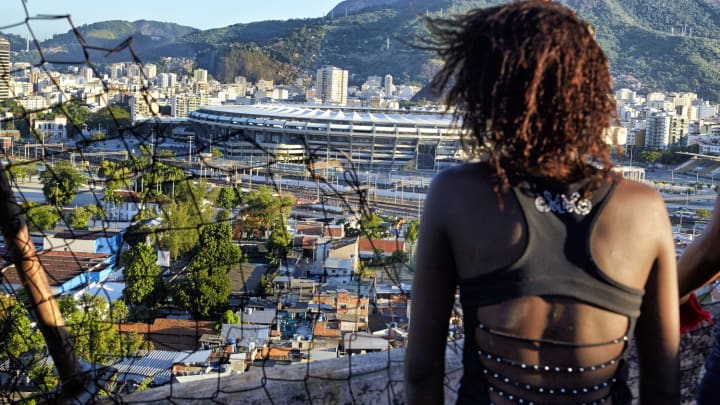The Two Brazils Revisited: What does the future hold after World Cup 2014?

RIO DE JANEIRO — I first met VitorLira last December, when I was here on a reporting trip for an SI magazine story called The Two Brazils. The article examined the complex nature of a country that can both love soccer and engage in mass protests over the public spending and societal impact of the 2014 World Cup and the 2016 Olympics.
Lira, 33, is a community leader in Santa Marta, one of Rio’s oldest favelas. Five generations of his family have lived there, and over the past two years he has organized resistance to the government’s plans for removals of Santa Marta residents as part of the sweeping changes in Rio around the World Cup and Olympics.
Lira was eloquent about the challenges facing his community when I spoke to him in December at a public protest in downtown Rio. But until this week I had never visited him in Santa Marta itself. It seemed like the right thing to do. For the past month we have been covering the World Cup, visiting six of the 12 venue cities all over Brazil, from the south (São Paulo) to the Amazon (Manaus) to the northeast (Natal, Recife) to Bahia (Salvador) and, finally, to the tournament’s nerve center in Rio.
But we had mostly followed the path that FIFA laid out, the one Brazilian organizers wanted us to see. Much of that path provided fantastic experiences—Salvador and Rio, in particular, are places where I’d vacation in a heartbeat—but in other places, like Recife, you could see first-hand that horrific flooding conditions for ordinary Brazilians didn’t match the FIFA-standard conditions at the fancy stadium some 20 miles outside the city.
Last year’s giant protests involving 1.5 million Brazilians didn’t repeat themselves during this World Cup for a number of reasons—not least that more radical, at-times-violent elements have gained influence—but the Brazilian masses are still unhappy about a lot of things. And so I reconnected with Lira through Kate Steiker-Ginzberg, the remarkable Rio-based fixer SI had hired back in December, who seems to know everyone in the Rio protest movement.
We visited Lira in Santa Marta last Thursday with Lee Feiner and Jack Schurman, SI’s video team at the World Cup, and spent the morning interviewing Lira and getting a tour of the Santa Marta he knows: the people and the places, the history and the present, all with an eye on what the future may hold. The plan is to come back in 2016, when the Rio Olympics are upon us, and see what has changed and what has not.
There are two Brazils, and Vitor Lira’s is just as important as the one you see on TV.
GALLERY: The Two Brazils
The Two Brazils Revisited

A leading soccer journalist and best-selling author, Grant Wahl has been with SI since 1996 and has penned more than three dozen cover stories.